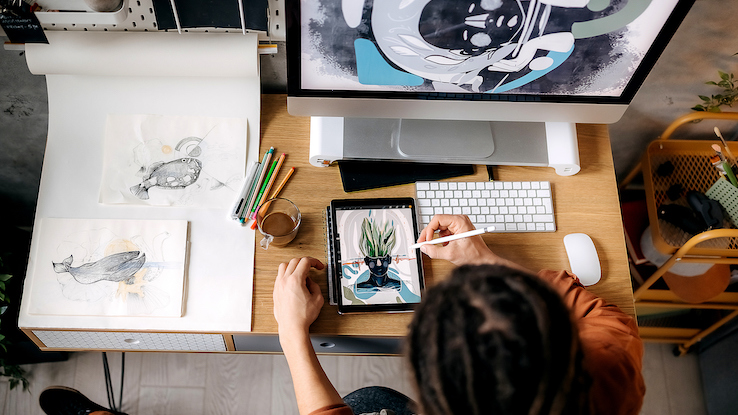Shortcuts to Boost Your Workflow in Adobe Photoshop

If you’re looking to speed up your workflow in Adobe Photoshop, there are a few magical shortcuts you can use. With just a few simple tricks, you can minimize the amount of time you need to spend editing photos, creating graphics, and more. Discover how to maximize your productivity with these tips.
Shortcut for Faster Editing
If you’re looking to speed up your editing workflow, there is a quick shortcut you can use. This shortcut minimizes the amount of time you need to spend editing photos.
To use this shortcut, first select the area or objects you want to speed up your work on. Next, use the keyboard shortcut “Ctrl+J” (Windows) or “Command+J” (Mac). This will open the “Layer Selector” dialog box. From here, you can choose which layers to process. By minimizing the amount of time you need to spend selecting layers and applying edits to each one you’ll be able to get more done in less time.
Shortcut for Creating Graphics
The quickest way to create graphics in Adobe Photoshop is by using a shortcut. There are three shortcuts you can use that will save you time and hassle. Let’s take a look at each one of them.
To create a new layer, press “Ctrl+N” (Mac: “Cmd+N”). This will open the New Layer dialog box. In this dialog box, you can specify the name and type of the layer. You can also specify whether the layer will be transparent or opaque. Finally, you can choose whether the layer will be merged with another current document or not.
If you want to add an image to a layer, you can use the “Ctrl+Alt+E” shortcut. This will open the Image File dialog box. In this dialog box, you can select the image file you want to add to the layer. You can also specify the size of the image file. After you have added the image to the layer, you can delete it by pressing “Ctrl+D” (Mac: “Cmd+D”).
You can also add text to a layer by using the “Ctrl+T” shortcut. This will open the Text Editor dialog box. In this dialog box, you can type the text you want to add to the layer. After you have added the text to the layer, you can delete it if you need to by pressing “Ctrl+T” (Mac: “Cmd+T”).
Another quick way to create graphics is to use the “G” (for “gradient”) shortcut. This will open the Gradient Editor dialog box. In this dialog box, you can specify the color gradient for the graphic. You can also specify whether the gradient will be horizontal or vertical. After you have added the gradient to the graphic, you can delete it by pressing “Ctrl+G” (Mac: “Cmd+G”).
If you want to change the color of a graphic, you can use the “R” (for “red”) shortcuts. This will open the Color Picker dialog box. In this dialog box, you can select the color you want to use for the graphic.
This text was generated using a large language model, and select text has been reviewed and moderated for purposes such as readability.





